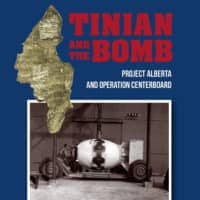For students of history, the waning days of the Pacific War seem to flash by in a blur and, for various reasons, little effort to now has been devoted to the role played by Tinian in the Northern Mariana Islands.
Tinian and the Bomb: Project Alberta and Operation Centerboard, by Don A. Farrell.
472 pages
MICRONESIAN PRODUCTIONS, History.
In July 1944, U.S. forces overran Tinian's Japanese garrison following landings on nearby Saipan, and immediately began building up its tiny airfield into what was to become the largest U.S. air base during World War II. It was from this island that the only two nuclear bombs used in war were launched aboard the B-29s Enola Gay and Bockscar.
Don A. Farrell, a resident of Tinian and chronicler of the island's history, relates the story of the decision, made early in 1945, to build not one, but three secret "factories" — specially equipped nuclear bomb-assembly facilities — on the island.
On the afternoon of Aug. 11, when it became understood that Japan was moving toward acceptance of the terms of the Potsdam Declaration, shipment "KB-1795," made up of high explosive materials for the third bomb, was held back at Mather Field, near Sacramento, California. If the surrender had been delayed, shipment to Tinian would have proceeded and it is likely one more bomb dropped, perhaps as early as Aug. 16.
Along with unfamiliar historical details from the U.S. side, made possible through recent declassification of archival documents, this book provides an account of how the use of the bombs influenced the Japanese government's decision to end the war.



